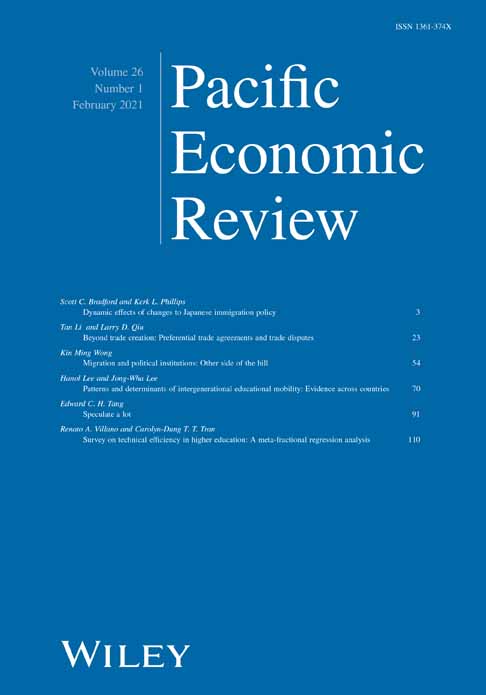Dynamic effects of changes to Japanese immigration policy
Abstract
This paper uses a single-sector dynamic stochastic general equilibrium model with heterogeneous households to analyse Japanese immigration policy. We examine the effects on output, consumption, factor prices, and utility. We do this for both steady states and transition paths. We find that: (a) aggregate output, investment, and consumption in Japan are likely to rise with any sort of loosening of immigration restrictions; (b) allowing more skilled immigration generates greater aggregate changes; (c) raising skilled immigration relative to unskilled immigration drives down skilled workers’ wages, consumption, and utility, while cutting the skilled to unskilled immigration share has the opposite effects; and (d) such immigration policy changes have small effects compared to those that occur naturally due to business cycle fluctuations




